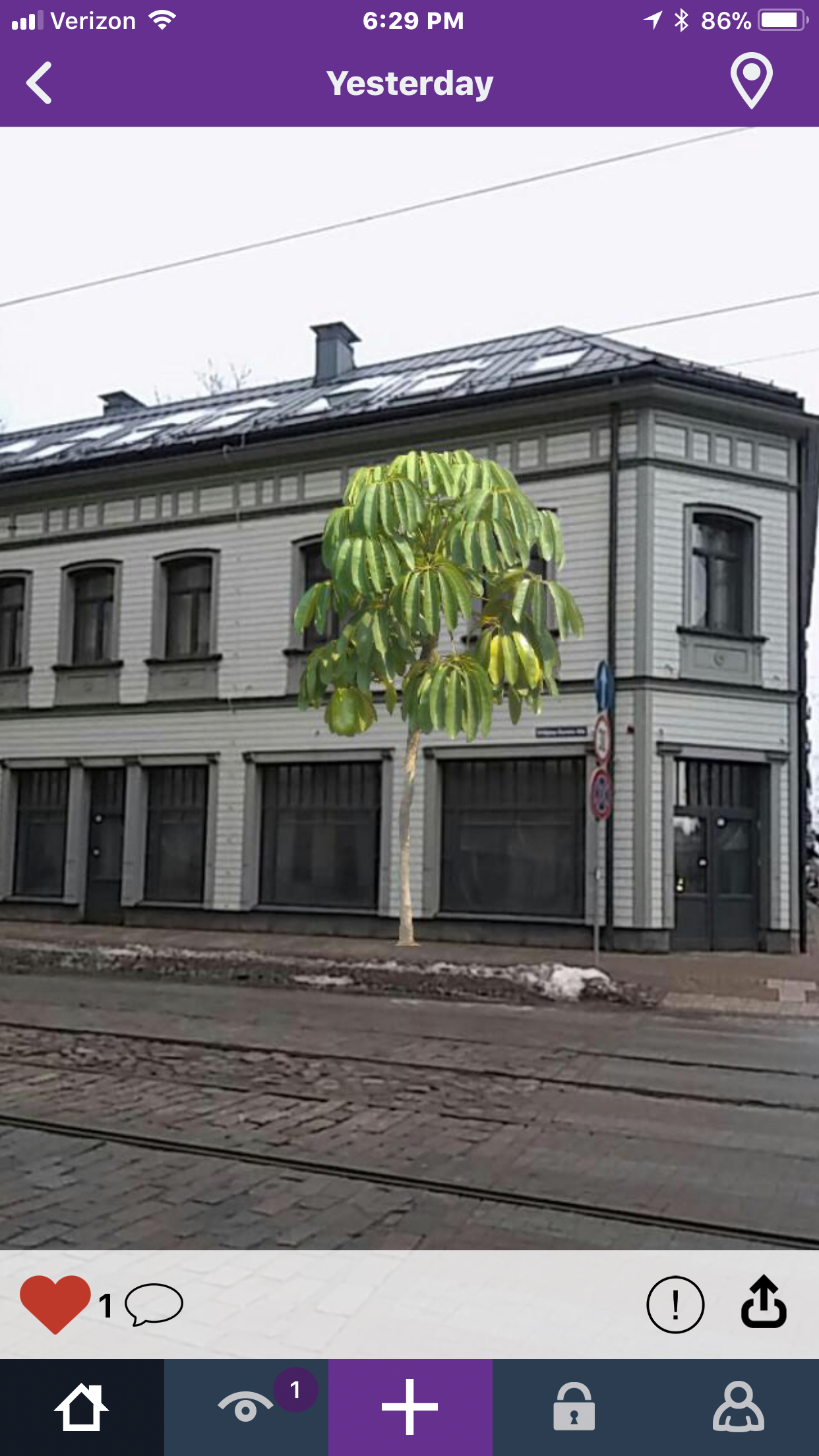Augmented Reality (AR) is the subset of Mixed Reality that powers the Mixed Reality Challenges that launched at District Hall (and later at Fab@CIC).
Augmented Reality is the technology that "superimposes a computer-generated image on a user's view of the real world, thus providing a composite view," according to the Oxford Pocket English Dictionary definition served up by Google as the top search result for the term.
The most accessible AR experience: the information that's overlaid on a typical television broadcast of an American football game: the first down line, the clock, and so on. That's AR.
The Mixed Reality Challenge chose to tap AR because it's future interesting, of course, but also because there were so many free augmented reality apps to choose from.
Why so many? Because all the major platforms, Apple in particular, were hoping it would catche on.
So all the platforms were trying to make it a downhill ride for developers. Apple, for example, was promoting ARKit, which claimed to make it easy for coders to build AR apps.
To find just the right AR app, you try out about a dozen free AR apps on your iPhone 8.
Your test location: Kendall Square, Cambridge. It's a big, open space that was on your way to work.
That's the Cambridge Innovation Center building behind an early AR "TEST," in the image that accompanies this post.
You were looking for the simplest AR app - the easiest to use, and the most reliable.
You thought you'd found it: WallaMe.
WallaMe had a simple motto: "Hide Messages in the Real World."
You also have to like their advice on how to start: "Find a wall."
Once you had found a wall, WallaMe let you draw or drop hidden augmented reality messages on it. You could also view other user's messages in the "Public Walls" tab.
If you pointed your phone at the same location a public picture was taken — at the same angle — the secret message would glitch around until you got into just the right viewing spot.
These WallaMe videos didn't lie: it really was this simple.
Here's another video:
WallaMe was based in London. Co-founder and CEO Stefano Iotti was raised in Italy, which may be why the app's early users tended to be European.
Weathered gray landscapes from Prague, Budapest, and Lisbon loom behind many of the AR images that show up on the app's homescreen, and on the website. The dark palettes were a refreshing change from the bright sunny backgrounds of California-created apps.
Alyss, for example, used WallaMe to place a unicorn in the middle of a street in Riga, Latvia. You know it's Riga, because WallaMe shows the location on a Google map.

Alyss also decorated Riga street scenes with a banana tree..

A banana tree in Riga
and a dalmation...

A dalmation waiting in a Riga crosswalk
Scrolling through the latest public AR images on WallaMe, one was struck by the realization that most people don't really know what to say on the walls around them.
The dominant motivation appeared to be: "just checking out this free app I downloaded."
Backgrounds included many bureaus, kitchen tables, and public parks.
Fireboom, for example, probably created this image, below, while sitting on his bed. The image was made in Albuquerque, New Mexico. WallaMe will tell you what neighborhood, if you're interested. Fireboom probably drove a muscle car, judging by his or her icon image.

by Firebooom
Of course, WallaMe had ambitions.
It had a full service platform for advertisers, and a private API that enabled advertisers and third parties to integrate the Augmented Reality capabilities inside their apps, with the same functions of WallaMe.
WallaMe also had a SaaS application, a premium service that allowed advertisers to manage and configure their own Augmented Reality digital campaigns.
But, WallaMe was also simple enough to scratch a very simple AR itch.
So that's the AR app you worked with.
And speaking of simplicity, one upside to the reigning crop of AR apps: the companies were so small that an inquiry was likely to get a response from the founder and/or CEO.
That was the case with WallaMe. When you had some trouble handling images, you got a response from CEO Stefano Iotti.
When you told him you were thinking of using WallaMe in a game, he was encouraging, offering this sentence to be added to this site: "WallaMe allows you to hide and share messages in the real world, that can be seen only by those you want."
Done.
"Furthermore," he added, "you could find helpful to share this hint: In the creation phase, if you want to get a good result you have to choose a target that does not change over time: trees, sky, people and animals are not good targets as they move and change. Good targets are paintings, signs, sharp images."
And walls. Why not try one in District Hall or (later) at Fab@CIC?
But first you had to encourage visitors to District Hall to download the free WallaMe app.
Then you had to get them to point their phone at the walls where the secret words were hidden.
If you pointed your WallaMe-enabled phone at these walls, secret words would appear.
This was not an easy sequence to trigger.
